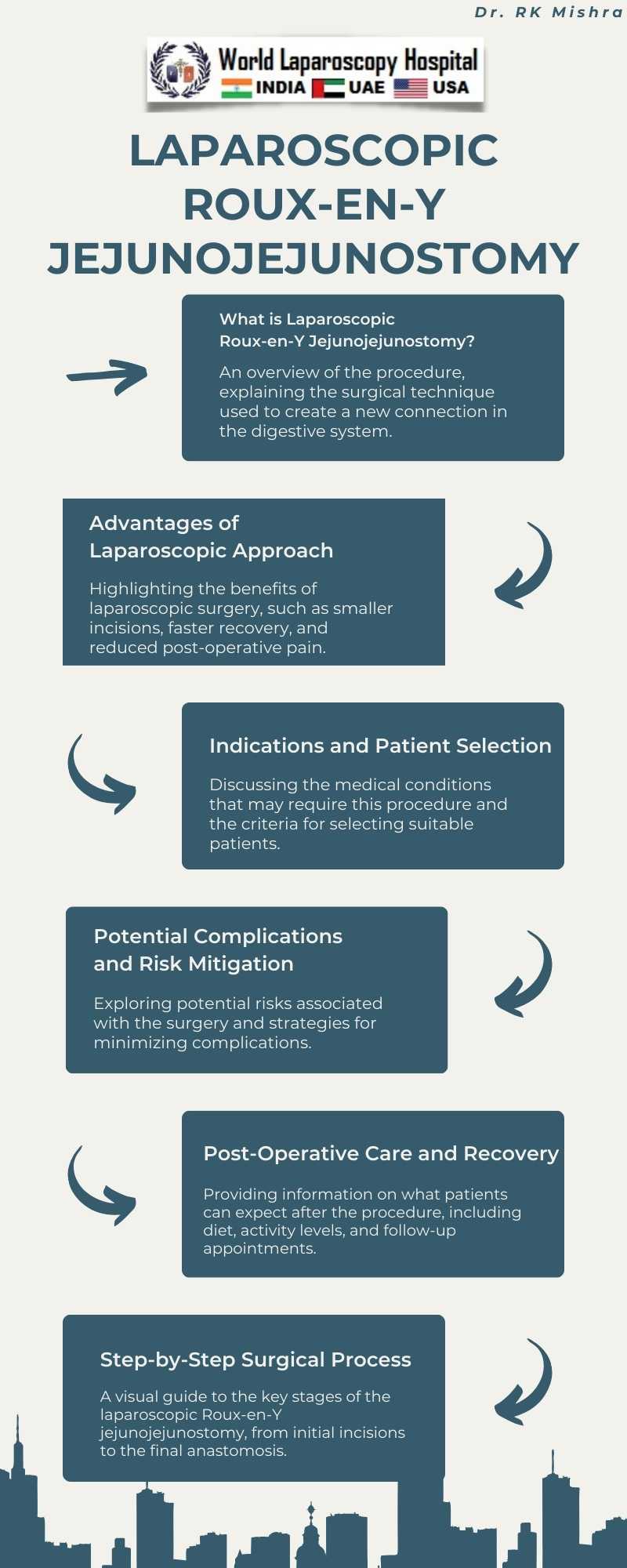The field of surgery has witnessed a remarkable transformation over the past few decades, driven by advancements in technology and innovative techniques. One such groundbreaking development is the laparoscopic revolution, which has revolutionized the way various surgical procedures are performed. Among these procedures, Laparoscopic Roux-en-Y Jejunojejunostomy stands out as a shining example of surgical progress. This article delves into the advancements and benefits of this minimally invasive procedure, shedding light on its significance in modern surgery.

Understanding Laparoscopic Roux-en-Y Jejunojejunostomy
Before delving into the advancements, let's grasp the essence of Laparoscopic Roux-en-Y Jejunojejunostomy. It is a surgical procedure primarily used to treat certain gastrointestinal conditions, including obesity and obesity-related diseases like type 2 diabetes. The surgery involves creating a new connection between the small intestine, bypassing a portion of it, to facilitate better nutrient absorption and weight loss.
Advancements in Laparoscopic Technique
1. Enhanced Visualization: One of the key advancements in laparoscopic Roux-en-Y Jejunojejunostomy is the improved visualization offered by high-definition cameras and advanced optics. Surgeons can now navigate with precision, reducing the risk of errors during the procedure.
2. Miniaturized Instruments: The development of smaller and more sophisticated surgical instruments has made it possible to perform intricate procedures with greater precision. Surgeons can manipulate tissues and perform anastomoses with unparalleled dexterity.
3. Robot-Assisted Surgery: The integration of robotics in laparoscopic surgery has brought about a significant leap in the precision and flexibility of the procedure. Robotic-assisted Roux-en-Y Jejunojejunostomy allows for more complex surgeries to be performed with minimally invasive techniques.
Benefits of Laparoscopic Roux-en-Y Jejunojejunostomy
1. Reduced Scarring: Unlike traditional open surgery, laparoscopic Roux-en-Y Jejunojejunostomy involves smaller incisions, resulting in minimal scarring. This cosmetic advantage is highly appreciated by patients.
2. Faster Recovery: Patients undergoing laparoscopic surgery typically experience shorter hospital stays and quicker recovery times compared to open surgery. They can return to their daily activities sooner.
3. Lower Risk of Complications: Laparoscopic procedures are associated with a reduced risk of infection, less pain, and fewer postoperative complications. This translates into a safer surgical experience for patients.
4. Improved Quality of Life: For individuals struggling with obesity and related health issues, laparoscopic Roux-en-Y Jejunojejunostomy can lead to substantial weight loss, improved metabolic health, and a better overall quality of life.
Patient Selection and Indications
As laparoscopic Roux-en-Y Jejunojejunostomy continues to evolve, it is crucial to identify the right candidates for this procedure. Patient selection criteria have become more refined, taking into account factors like BMI, comorbidities, and the potential benefits of surgery. This ensures that the surgery is both safe and effective for the individual patient.
Challenges and Future Directions
While laparoscopic Roux-en-Y Jejunojejunostomy has witnessed remarkable advancements, challenges persist. Long-term outcomes, the risk of complications, and patient adherence to postoperative dietary recommendations remain areas of concern. However, ongoing research and innovation in the field promise to address these challenges and further improve the procedure.
Conclusion
The laparoscopic revolution has undoubtedly left an indelible mark on modern surgery, and Laparoscopic Roux-en-Y Jejunojejunostomy is a shining testament to this transformation. With enhanced techniques, improved patient selection, and a growing body of evidence supporting its efficacy, this minimally invasive procedure continues to redefine the landscape of surgical interventions. As technology and surgical expertise continue to evolve, we can expect even more exciting advancements in the field of laparoscopic surgery, ultimately benefitting patients and improving their quality of life.